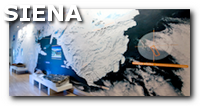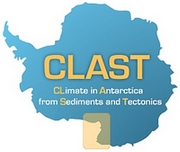Published in Scientific Committee on Antarctic Research
The effects of Antarctica's ozone hole may have spread much wider than previously thought. Ozone loss over the South Pole might be the reason for a two-decade rise in early summer temperatures across southern Africa, according to research published today in Nature Geoscience.
Desmond Manatsa, a climate scientist at Bindura University of Science in Zimbabwe, and colleagues analysed data sets of southern African climate from 1979 to 2010, covering the years before and after the development of the ozone hole over the Antarctic. They found that the size of the ozone hole seemed to influence wind patterns and triggered an upward shift in early summer temperatures.
Manatsa had been puzzled by the abrupt and seasonal increase in surface air temperatures in southern Africa. "The temperatures were actually significantly higher than those of other seasons and the rising assumed a shift rather than a slow and gradual manner," he says. The warming did not match what he expected to see from greenhouse-gas emissions.
Studies by others have previously shown that the Antarctic ozone hole has changed surface climates over the Antarctic and the Southern Ocean, as well as New Zealand, Patagonia and southern Australia. Manatsa shows that the climate effects of the ozone hole reach even farther. He found that a larger ozone hole coincided with a stronger summertime, continental, low-pressure system called the Angola Low, which brings in warm air from the lower latitudes to southern Africa, increasing surface air temperatures.
Anthropogenic chemicals known as chlorofluorocarbons released from aerosol spray cans, refrigerators and air conditioners have broken down some of the ozone in the stratosphere. The 1987 Montreal Protocol banned the release of these ozone-depleting substances in an attempt to reduce ozone thinning. Atmospheric monitoring shows that the ozone hole, which reached its greatest extent — 28.5 million square kilometres — in 2006, is shrinking, and several studies suggest that it might disappear by 2065.
If that occurs, summer temperatures in southern Africa might cool. "It is my belief that [the] long-term forecasts for the region, not only for surface air temperature but also for the summer rainfall, may need some revisiting," says Manatsa.
For more information, see the item on Nature - News or read the full article in Nature Geoscience.









